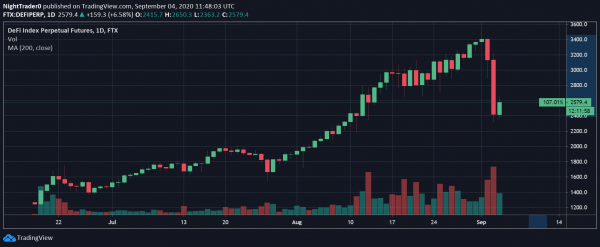Yield farming DeFi projects feel the burn amid crypto sell-off

Market corrections typically hit immature assets the hardest, which is why when Bitcoin began to slide back to $10,000 yesterday, investors began to panic sell yield farming DeFi tokens that had experienced substantial gains over the past few weeks.
The issue with these tokens is that when they are staked in a liquidity pool in order to earn interest, they are harder to liquidate than if they were on an exchange. Tokens would need to be unstaked before being swapped on an exchange like Uniswap, where Ethereum gas prices reach as high as $50 per transaction.
This causes an eventual cascade in sell orders as investors are desperate to cut their losses before the largest assets like Ethereum and Bitcoin begin to dive further.
The heavily-discussed Yearn Finance (YFI) has actually performed better than most in spite of the sell-off, falling by just 29.16%, which isn’t too bad when compared with its fork YFV, which has lost more than 68% of its value in two days.
The sell-off over the past 24 hours is a prime example of why it’s important to remain level-headed in what seemed like a fully-fledged bull market. These yield farming tokens are extremely illiquid and thus very risky, if Bitcoin begins to tick lower than $10,000 over the weekend it may well flush most of the capital staked in DeFi out of the market.

DEFIPERP chart by TradingView
Remarkably, investors on social media channels are touting these battered and bruised yield farming tokens as definite buys in this trading range, but when Bitcoin is being so indecisive the risk reward set up surely isn’t there just yet.
One way to capitalise on the peaks and troughs of DeFi would be staking tokens, keeping in mind risk and capital management, while shorting the DeFi perpetual swap contract on a derivatives exchange.
This means that if the index plummets, as it has over the past 48-hours, a trader will profit from the short position while continuing to mint new tokens by staking, which increases exposure and potential profits on the next uptick in price.
Investors should be reminded, however, that the majority of these staking contracts are unaudited and that there is an inherent risk that they may eventually go to zero, which was the case for Yam Finance.
For more news, guides and cryptocurrency analysis, click here.
Source: coinrivet.com